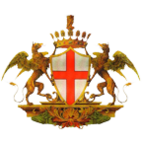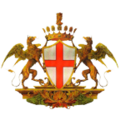Genoa, a special city!
Genoa is a city of contrasts, sometimes of extremes. A city of surprises. For example, it is a city of art yet it is also an industrial centre. It has Italy’s largest port but nearby there are crowded beaches in Corso Italia; glass skyscrapers stand alongside medieval towers, modern offices are located in former palaces that are still largely intact. It is a “vertical” city on account of the height of the buildings and the lack of space in the warren of tiny alleyways (caruggi) and narrow cobbled paths (creuze) leading uphill and away from the coast. It is a city of contrasts also in terms of the light: dazzling when looking out to sea from Castelletto or Righi, dark and slightly threatening in the core of the old town.
It is a city of contrasts in terms of the colours: the pastel shades of the facades side by side with grey and black slate. It is a city that has always been a crossroads of cultures and peoples. Genoa is also an impervious and solitary city. A place that takes time to appreciate but then grows on you and rewards you with one thrilling discovery after another. Genoa’s history dates back 26 centuries and legend has it that it was founded by Janus, the two-faced deity that presided over gates and doorways. Indeed, Genoa has always been a “gateway” to civilisation, linking East and West, the Mediterranean and Europe.
Genoa has always been the master of its own destiny. Allied with the ancient Romans against Carthage, Genoa was sacked and burnt by Hannibal’s brother, Magone. This tragedy has left its mark on collective Genoese consciousness and is reflected in the local dialect: “avere il magone” (u magun) means to fall into a state of depression. The city began its great era of expansion in the year 1000 and became a powerful maritime republic whose commercial influence and military dominion extended over much of the Mediterranean, with settlements as far away as the Black Sea.
Under Andrea Doria, who became Priore Perpetuo in 1528, the Republic of Genoa reached the height of its power: this was the beginning of the “Century of the Genoese” – rich traders, extraordinary navigators and merchant bankers who financed the mighty Spanish empire ruled by Charles V. A stroll down Via Garibaldi will remind you very much of this past grandeur. Genoa also played a vital role in the Risorgimento with Mazzini, Mameli and many others. Garibaldi’s Mille, the 1000-strong expedition to annex Sicily,left from a rock in the suburb of Quarto.
In the 20th century Genoa developed into a large modern port and became a major industrial city for Northern Italy. Today, it is a centre of technological innovation and high added value service industries as well as a place attracting ever-increasing numbers of visitors. Genoa was “European Capital of Culture” in 2004 and in 2006 its system of “Palazzi dei Rolli e delle Strade Nuove” was declared part of the UNESCO World Heritage List.
Source: www.visitgenoa.it/sites/default/files/Pocket%20guide%20to%20Genoa_0.pdf
Yhteydenotto Genua

Tourismus Büro IAT Garibaldi
Via Garibaldi, 12r, I-16124 Genova
- Puhelin
- +39 0105572903
- Kotisivu
- http://www.visitgenoa.it/
- info@visitgenoa.it
- 1 hour ago
- Finale Ligure und Umgebung
- Genua
- Cinque Terre
- Genua und Umgebung
- Sestri Levante und Umgebung
- La Spezia
- Golfo dell'isola
- Sanremo und Umgebung
- Golf von La Spezia / Golf der Dichter
- Savona
- Imperia und Umgebung
- Loano und Umgebung
- Golf von Tigullien
- Riviera del Beigua
- Andora und Golf von Dianese
- Ligurische Alpen
- Paradiesgolf
- Savona und Umgebung

